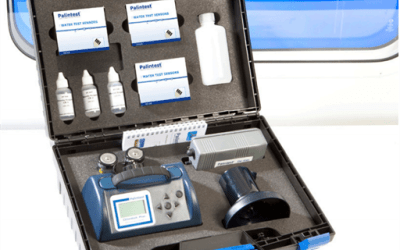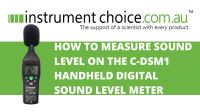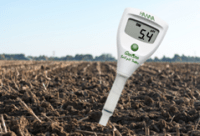How To Measure The Chemical Reactions In Your Swimming Pool For A Safer Swim!

Swimming pool maintenance is essential to preventing the emergence of serious health risks to users. Because the interactions of chemicals in a swimming pool are complex, regular monitoring of key chemicals is required to ensure a safe pool environment. Chlorine levels, specifically the level of free chlorine in a pool is the most important measure for ensuring a safer swim.
Sources of pool contamination can include humans, animals and the environment. In most cases, organisms in pool water cause mild illness, but some infections can be serious or potentially fatal.
Keeping a pool clean essentially involves three things:
- Controlling bacteria and viruses
- Controlling algae
- Treating or removing contaminants such as sunscreen, skin and hair
Bacteria and Viruses
Untreated water can accumulate harmful Escherichia coli and Salmonella bacteria and protozoans such as Cryptosporidium parvum and Giardia lamblia. Such harmful bacteria and viruses must be killed quickly to prevent user infection.
The most common methods of disinfecting a swimming pools are:
- Chlorine
- Bromine
- Electrolysis
- Ozonation
- Ultraviolet (UV) radiation
- Active oxygen; and
- Ionization
Chlorine is by far the most popular of these alternatives, probably as it is relatively inexpensive and easy to monitor.
Contaminants
While disinfection chemicals are necessary for killing pathogens, they don’t just float around inertly in the water. Many of them react with any organic material in the water. Contaminants, such as sunscreen, skin, urine and hair affect the performance of chlorine and introduce other compounds that are the building blocks for what are known as “disinfection by-products (DBPs)”. Anybody who frequents a pool is going to be exposed to these DBPs—in the water in the pool or in the air around it. Many of these chemicals can be considered toxic at certain levels and so contaminants should be kept from entering the pool or regularly removed.
Algae
While not dangerous to humans, excessive algae in swimming pool water can be breeding ground for many different dangerous types of bacteria and so must be controlled.
Indicators of Swimming Pool Water Quality
A variety of devices and kits are used to test swimming pool water quality. The essential chemistry to observe is:
- Chlorine levels
- pH levels
- Cyanuric acid levels
- Total alkalinity; and
Calcium hardness
In addition to measuring the levels of key chemicals, observing the presence of algae is important. Look for discolouration of pool walls and cloudiness in the water.
The Importance of Getting Key Pool Chemicals Right – How They Interact
Chlorine
The chlorine in the water that can effectively kill bacteria is called ‘free residual chlorine’. If chlorine is the preferred chemical to deal with bugs in your pool, the free residual chlorine concentration in your pool should be maintained at 1.0 to 3.0 mg/L. The ideal level is 2 mg/L. If chlorine levels are maintained at ideal levels, not only should bacteria and many pathogens be held at bay, there should be no chlorine smell.
It’s often believed that pool smell is due to too much chlorine. The opposite is true. The real culprits are chloramines, chemical compounds that build up in pool water that make their present felt when your pool it is not managed well. Chloramines result from the combination of two ingredients: (a) chlorine disinfectants and (b) perspiration, oils and urine that enter pools on the bodies of swimmers.Pool smell is an indication that shock dosing with chlorine is needed to remove chloramines.
pH
Humans, along with many of the organisms that coexist alongside us, thrive in the pH range of 7.2 to 7.6. Coincidently, to ensure chlorine works efficiently and for the comfort of pool users, the pH range must be maintained within these limits.
Stabiliser (cyanuric acid)
To prevent chlorine from rapidly breaking down in pools exposed to direct sunlight (and therefor to reduce the amount of chlorine consumed) cyanuric acid is needed. The recommended levels should be a minimum of 30 mg/L but no more than 50 mg/L.
Preventing algae
Algae are small organisms that multiply rapidly and can form slimy, green floating material or coat surfaces. They are very common organisms brought in by rain, wind, soil or even on swimwear and cleaning equipment.
Good pool maintenance can prevent algae growth. In pools disinfected with chlorine, the presence of algae is an indicator that free chlorine is not being properly maintained. If algae are present, you need to ensure that disinfectant and pH levels are within the recommended range.
In addition to chlorine and physical cleaning, algae can be controlled using an algaecide.
Total alkalinity
Total alkalinity, the measure of water's ability to neutralize acids, requires weekly monitoring and treatment to prevent cloudy water, scale formation, metal corrosion and to keep the water comfortable for users. In addition, low alkalinity can destabilise pH levels, which in turn can affect the effectiveness of chlorine.
Total alkalinity should be maintained in the range of 60 to 200 mg/L and adjusted as necessary using sodium bicarbonate.
Calcium hardness
To prevent scale formation, calcium hardness should be checked at least once a week. Further, when Calcium hardness is too low, i.e. the water is “too soft”, it can create a reaction called “pH bounce” which in turn, can affect the performance of chlorine. The ideal range of calcium hardness is 150 to 400 mg/L.
After examining the key chemicals for maintaining pool water balance and how they interact, you could conclude that chlorine is central to ensuring a healthy pool. We should now drill down and look closer at managing chlorine levels.
Measuring Chlorine
Measuring chlorine in a pool is a relatively easy task. Chlorine concentrations in the range of 1 to 3 ppm are used in both pools and spas. Since free chlorine is the primary disinfectant used for swimming pools, the choice of the best means of measuring free chlorine for your application is needed.
Test Strips
Test strips are small strips, typically produced from plastic, with pads on the end that are chemically impregnated. These pads are designed to react with specific ions and produce a specific colour change. Once a test strip has reacted, the resulting colour is then compared to a printed colour chart. The chart is calibrated to various concentrations of free chlorine. Using the human eye, matching the strip to the closest colour tone produces the chlorine level reading.
For homeowners concerned about chlorine levels or for those wanting a general idea of chlorine level, test strips are a good option. It is not the most accurate method, however, because colour matching is subject to interpretation. For fussier homeowners or managers of commercial or public swimming pools the greater precision offered by chlorine meters is recommended.
DPD Chlorine Meters (Colourimeters)
Chlorine meters that are known as Colourimeters use the DPD method to measure free chlorine. This type of chlorine meters works according to a similar colour matching principle as test strips. DPD reacts with free chlorine and dyes pool water a tone of pink to indicate the level of the chlorine. More sophisticated and accurate chlorine meters are placed inline to measure water passing an electric eye (called a photodiode). A light beam is passed through the sample and the amount of light transmitted is dependent on the amount of colour in the sample. The resulting observations are more consistent and accurate with this type of chlorine meter. Colourimeters typically detect chlorine in the range of 0 to 5 parts per million (ppm).
Amperometric Chlorine Meters
A more sophisticated technique to measure chlorine inline requires an amperometric chlorine meter. These devices measure chlorine using a sensor probe containing the electrolyte potassium chloride (KCl). The chlorine meter’s probe is placed inline such that free chlorine moves across a membrane on the probe triggering a reaction with the KCl to produce an electric current. Essentially, the stronger the current, the higher the level of chlorine present. Some models of amperometric chlorine meters are capable of remote monitoring/control and can measure chlorine levels from 0 to 20 ppm.
Advantages and Disadvantages of Different Methods of Measuring Chlorine
Test Strips
- Advantages of Test Strips
- Simple to use and inexpensive
- Fairly accurate reading of chlorine
- No equipment maintenance required
Disadvantages of Test Strips
- (Subject to your application) the cost associated with technicians collecting and analysing samples
- Results using the human eye are subjective – will be interpreted differently from person to person.
- If samples are already discoloured results will be inaccurate result. Oxidized manganese is known to cause a false positive for chlorine when using the DPD indicator.
- If used for public water utilities, test strips are single test method. Continuous reading using chlorine meters will result in better pool management.
The Case for Continuous Readings
- Allows for prompt correction of any chemical balances
- The sanitising system can be automated by using a controller to turn on a chlorine pump when chlorine levels reach a predetermined minimum threshold.
- Suitable where pumping stations are in remote areas or systems are managed with minimum staff.
- DPD Chlorine Meters (Colourimeters)
Advantages of Colourimeters
- Greater accuracy compared to test strips
- Continuous testing with instantaneous results
- Readings can be forwarded to a system that can collect data or set off an alarm notification
- Eliminates the need for an operator to perform a visual analysis, thus limiting the possibility of human error and subjective reading.
Disadvantages of Colourimeters
- To ensure acceptable accuracy, requires a constant supply of clean water for taking samples, large quantities of chemical reagents and perfect operations of components such as pumps and tubing.
- Amperometric Chlorine Meters
- Advantages of Amperometric Chlorine Meters
- More recent technology
- A true continuous reading system and the most accurate method
- Does not result in wasted water - does not take samples like the colourimeter
- Does not require the chemicals needed for the colourimeter, reducing operating costs
- The least maintenance of all three methods.
- Disadvantages of Amperometric Chlorine Meters
- The sensor probe is expensive (initial capital cost)
Not suitable for water that has been treated by reverse osmosis (RO). The aggressive nature of RO-treated water attacks the electrolyte found in the sensor, causing it to diffuse out of the probe, making any measurement inaccurate.
Examples of Popular Chlorine Meters
![]%20(2).png?Action=thumbnail&algorithm=fill_proportional&width=216](https://www.instrumentchoice.com.au/%5D%20(2).png?Action=thumbnail&algorithm=fill_proportional&width=216)
An example of a well-liked DPD style chlorine meter (colorimeter) is thePooltest 3. This product utilises DPD reagent tablets to obtain more accurate results than test strips. It’s ability to measure free and total chlorine, pH and cyanuric acid make it an excellent entry level chlorine meter for regular pool monitoring.
A step up from the Pooltest 3 is a group of multiparameter chlorine meters, including the Pooltest 9 with Bluetooth. Well regarded amongst public authorities and commercial enterprises where compliance or cost factors require the observation of a wider number of parameters, this chlorine meter conveniently calculates chlorine (total and free), pH, cyanuric acid, calcium hardness, total alkalinity, bromine, Copper, Iron and Ozone. This style of chlorine meter will assist in maintaining pool levels at an optimum level.
.png?Action=thumbnail&algorithm=fill_proportional&width=265)
If you have any questions at all regarding Instrument Choice’s products, if you can’t find the flow meter you’re looking for, or you need advice with an application, setting up your equipment, or designing an experiment contact an Instrument Choice scientist.
Also interesting
The C-DSM1 Sound Level Meter enables users to take sound level measurements with ease.This meter can measure sound from 30 to 130dB, set fast or slow responses as well as utilise both A and C weightings to measure sounds within the response range of the human ear.
This sound meter packs these, and many other highly functional features into a handheld and easy-to-use sound level meter.

The IC-HI981030 is a pocket-sized, application-specific soil pH tester packed with features to help you streamline the collection of soil pH information. The advanced features of this pH tester enable you to take accurate measurements time and time again.
The cutting-edge features of the Groline soil pH tester include:
- Conical electrode tip for easy soil penetration
- Open junction electrode with a removable sleeve; and
- On-screen stability indicator.

